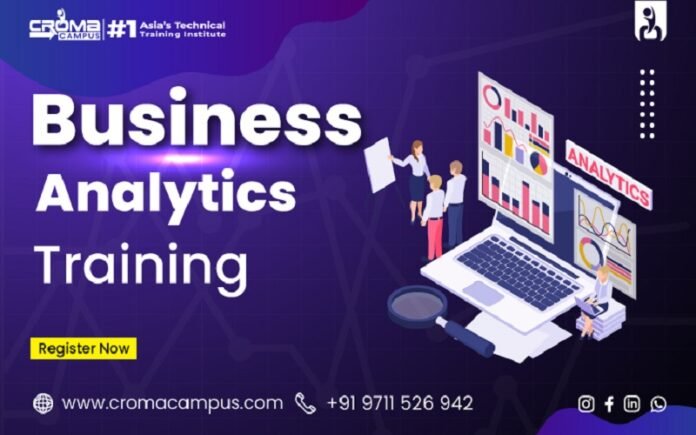Introduction
Advanced statistical modeling techniques are vital for businesses to make informed decisions. These techniques allow for precise data analysis, uncover hidden patterns, predict trends, and provide actionable insights. Professionals in business analytics increasingly rely on these techniques to enhance decision-making, especially in fields like finance, healthcare, marketing, and supply chain management. For those aiming to master these techniques, enrolling in a Business Analytics Online Course can significantly enhance their skills and career prospects. Explore some advanced statistical modeling techniques commonly used in business analytics, providing insight into their applications, benefits, and usage.
1. Regression Analysis
Regression analysis is a foundational statistical method for predicting a dependent variable based on one or more independent variables. While linear regression is the most commonly used, advanced methods like multiple regression, logistic regression, and ridge regression are often employed in business analytics. These methods help businesses predict trends such as customer demand, stock prices, or sales.
For example, a company might use multiple regression analysis to forecast future sales based on factors like marketing expenditure, pricing strategy, and seasonal trends. The technique identifies the relationship between these variables and predicts future outcomes.
| Regression Type | Application | Benefit |
| Linear Regression | Predicting continuous data | Easy to implement, explains variable impacts |
| Logistic Regression | Classifying binary outcomes | Helps in fraud detection, customer retention |
| Ridge Regression | Handling multicollinearity | Reduces overfitting, improves model accuracy |
2. Time Series Analysis
Businesses frequently use this technique to forecast future events by identifying patterns such as seasonality or trends in historical data. For instance, a retail company might use time series analysis to predict sales trends during holiday seasons or specific product demand in future months.
Autoregressive Integrated Moving Average (ARIMA) and Exponential Smoothing are popular methods for analyzing time series data. These techniques can model and predict future outcomes based on past data points, giving businesses a better understanding of cyclical trends.
Time Series Forecasting
3. Cluster Analysis
Cluster analysis is an unsupervised machine learning technique used to group data into clusters based on their similarities. Businesses often use this to segment customers, products, or markets. For example, companies can cluster customers based on buying patterns, demographics, or behavior to tailor marketing strategies for each group.
K-means clustering, Hierarchical clustering, and DBSCAN are common clustering algorithms used in business analytics. By grouping data effectively, companies can gain deeper insights into customer preferences and behaviors, resulting in more personalized services and targeted marketing efforts.
| Cluster Analysis Method | Application | Benefit |
| K-Means Clustering | Customer segmentation, product categorization | Simplifies targeting strategies, reduces marketing costs |
| Hierarchical Clustering | Market research, competitor analysis | Identifies relationships between data points |
| DBSCAN | Detecting outliers, fraud detection | Enhances anomaly detection and risk management |
4. Decision Trees and Random Forests
Decision trees are a predictive modeling technique used for both classification and regression tasks. They work by recursively splitting the data into subsets based on the most significant variables. This model is widely used in business analytics for decision-making processes, such as determining credit risk, customer churn, or product recommendations.
Random Forests, an ensemble learning technique, extends decision trees by building multiple trees and combining their predictions to improve accuracy and prevent overfitting. This method is highly effective in handling large datasets with complex relationships between variables.
| Method | Application | Benefit |
| Decision Trees | Credit risk assessment, customer churn | Provides clear decision rules |
| Random Forests | Fraud detection, recommendation engines | Reduces overfitting, increases model accuracy |
Decision Tree Usage in Business
5. Bayesian Inference
Bayesian inference applies probability theory to update the probability for a hypothesis as more evidence or information becomes available. It is highly effective in making predictions under uncertainty. In business analytics, Bayesian models are used to calculate the probability of future events, such as customer churn or product failures, by factoring in new data.
For example, in marketing campaigns, Bayesian inference can predict customer behavior changes based on their previous responses to advertising. Bayesian models offer a flexible approach that updates dynamically, improving accuracy over time.
Course and Certification
By pursuing Business Analytics Certification Courses can provide hands-on experience with these techniques, ensuring that learners are well-equipped to tackle real-world challenges in business analytics.
Enhance your analytical skills with a Business Analytics Online Course, designed to equip you with essential tools and techniques for data-driven decision-making. This course covers key concepts in data analysis, statistical methods, and predictive modeling, enabling you to transform raw data into actionable insights.
Additionally, pursuing Business Analytics Certification Courses can validate your expertise and boost your career prospects, making you a valuable asset in today’s data-centric business environment. Join now to unlock new opportunities in business analytics!
Conclusion
Advanced statistical modeling techniques play a critical role in shaping business strategies and decision-making. Techniques like regression analysis, time series forecasting, cluster analysis, decision trees, random forests, and Bayesian inference offer powerful insights into complex business problems. By mastering these methods, professionals can significantly enhance their ability to predict outcomes and make data-driven decisions.
